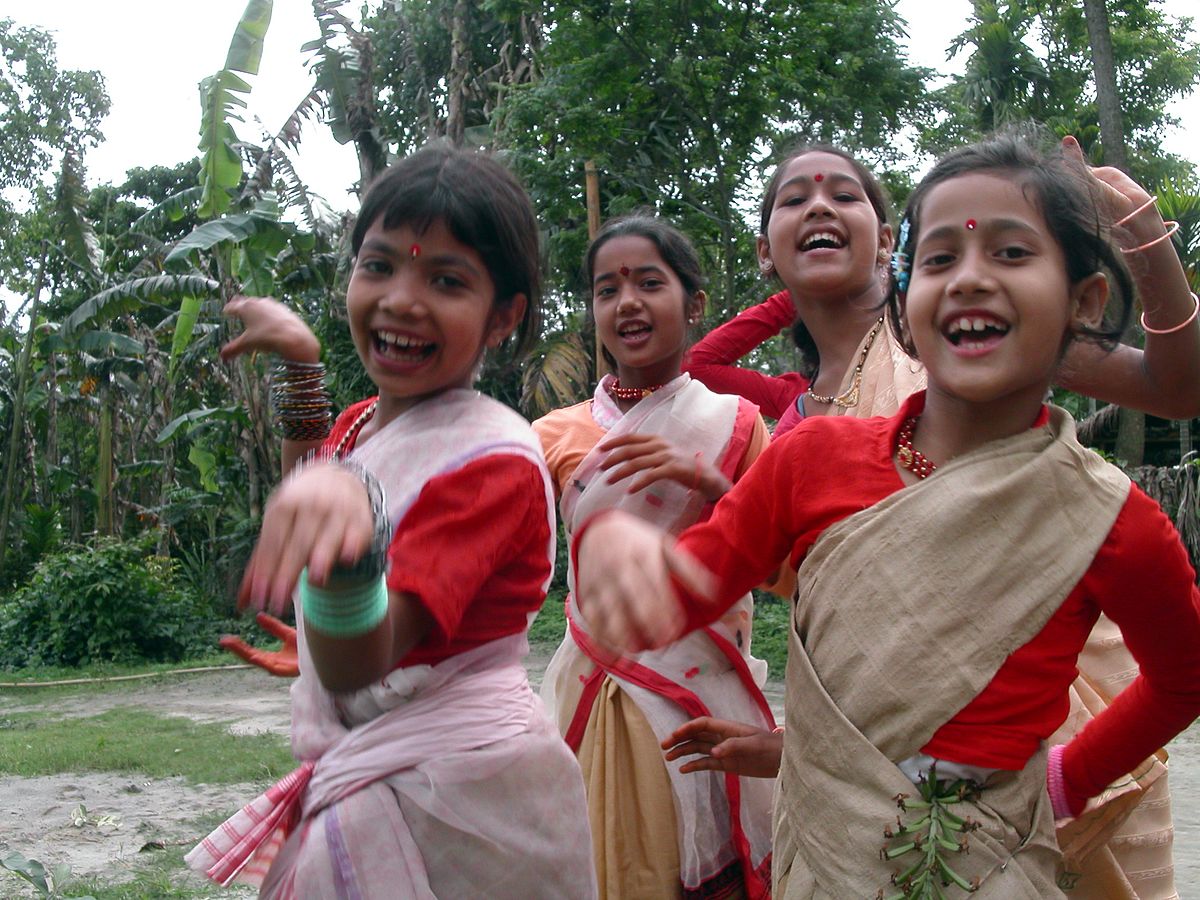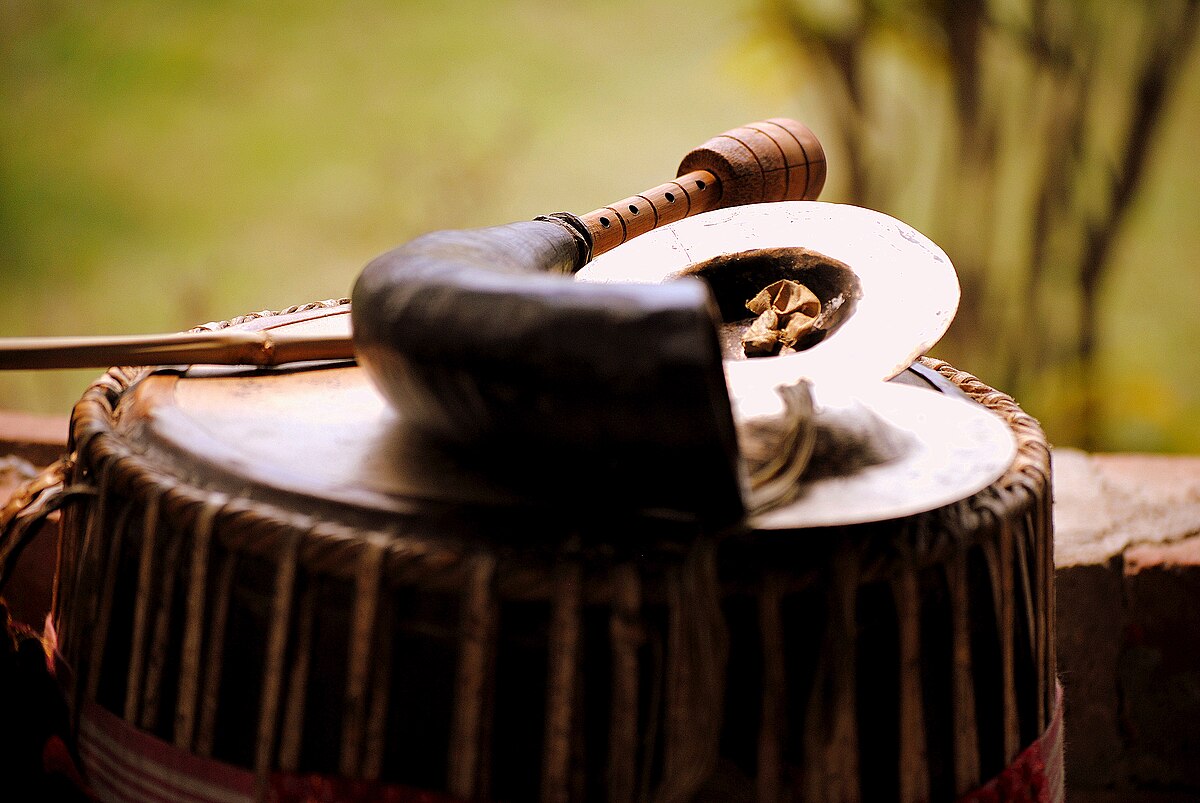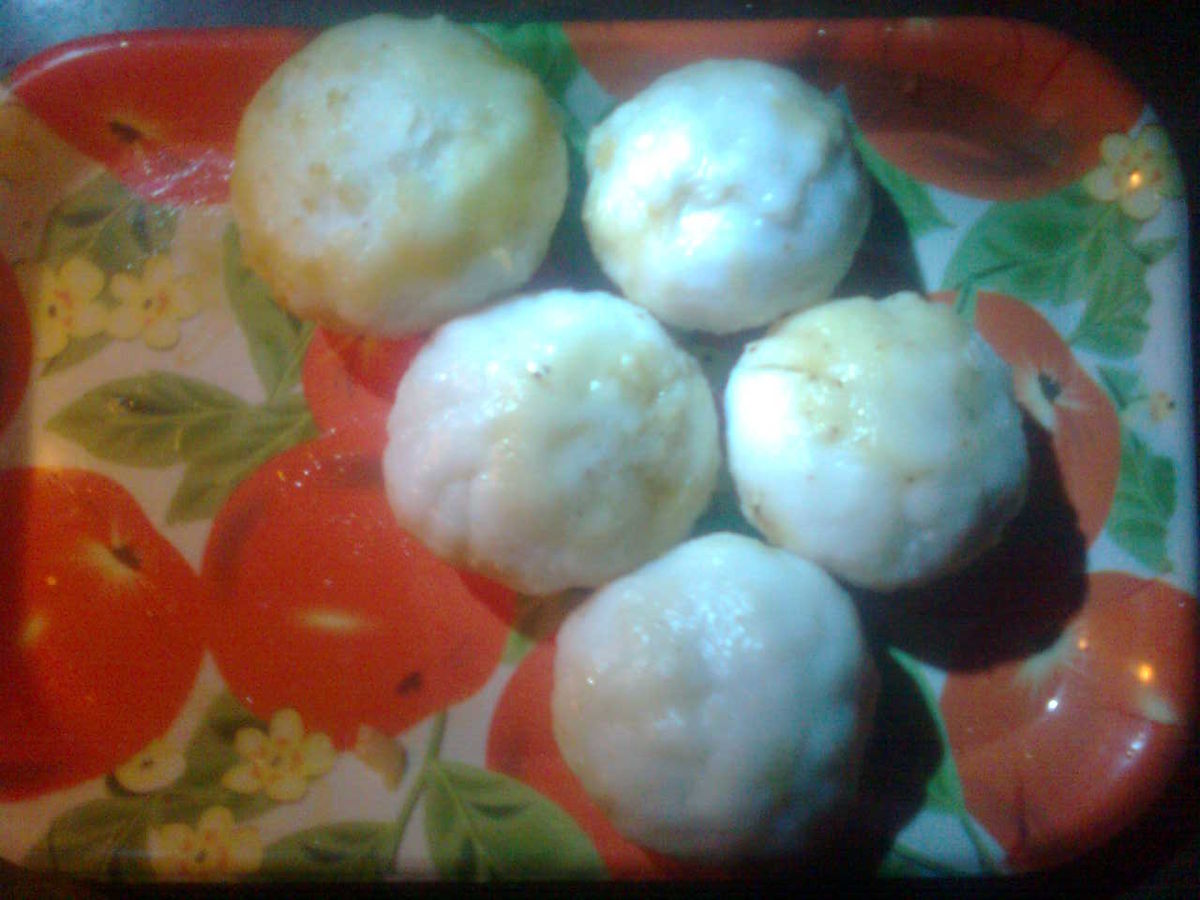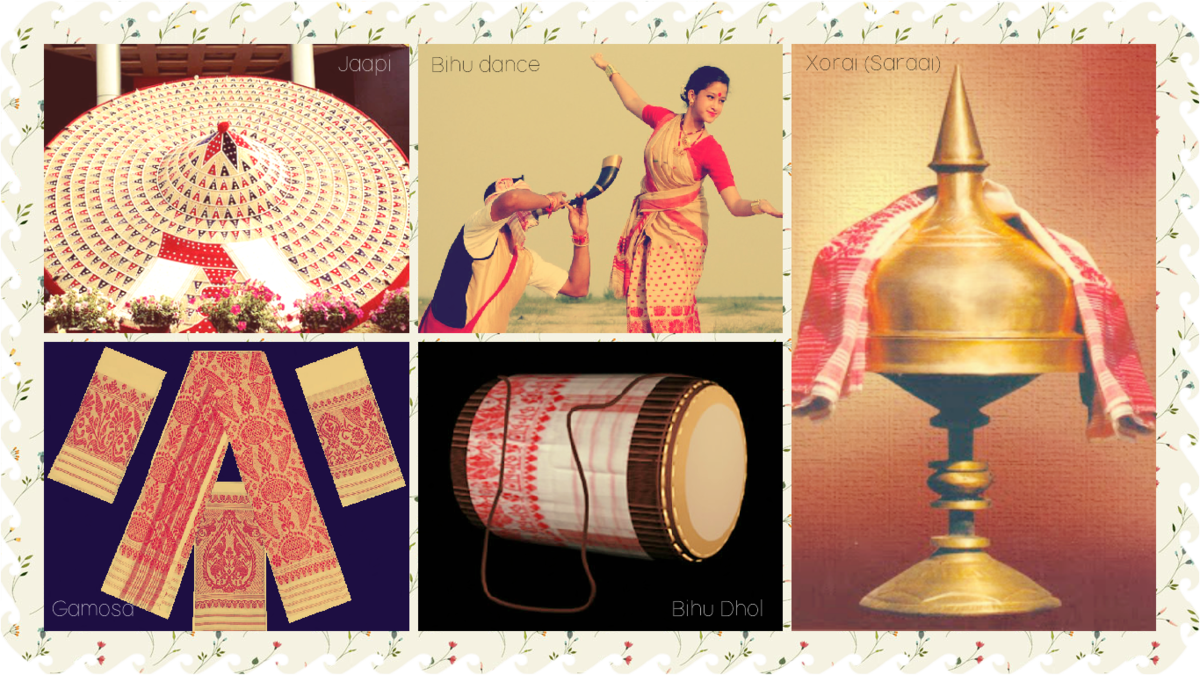Bihu , Assamese New Year, is the chief festival of Assam. It is a set of three different festivals, Rongali or Bohag observed in the Gregorian month of April, Kongali or Kati Bihu observed in October, and Bhogali or Magh Bihu observed in December, of which Rongali Bihu is considered to be the most important one celebrating the new year and spring. Bhogali Bihu or Magh Bihu is all about food while Kongali Bihu or Kati Bihu reflects a season of short supplies (Kongali meaning poverty).
Montage of Asamiya Cultural Symbols: Jaapi, Bihu dance, Saraai (Xorai), Bihu Dhol, Gamosa.
The word Bihu is originally derived from the Sanskrit word
‘bishu’, which means to ask for prosperity from the Gods during important
junctures of the harvest season. It is commonly believed that the festival
received its name from two different words – “bi” which means to ask, and “hu”
which means to give.

By Diganta Talukdar -
Youth perform the Bihu dance on the occasion of Rongali Bihu festival
Rongali Bihu or Bohag Bihu is a month-long festival with seven phases and
hence is called Xaat (seven) Bihu. It starts with Raati Bihu performed on the first
night of Chot and marks the beginning of a month-long season of festivities and
nightly performances in open fields illuminated by burning torches, meant to be
a gathering for local women. The
presence of men is only ceremonial wherein they played the pepa, a buffalo hornpipe,
or bholuka baanhor toka which is a split bamboo musical instrument.
Bathing and worshipping cows (Goru bihu) is a part of the Bihu celebrations.
The last day of Chot month is celebrated as Goru (Cow) Bihu with
ritual bathing of livestock using a paste of symbolic herbs like black gram and
turmeric paste, whipped dighloti (litsea
salicifolia), makhioti (flemingia strobilifera), tonglati (a plant with flower
like soft plastic butter-fly) and pieces of bottle gourd and brinjal. After the bath, the livestock are decorated
with new harnesses and garlands. People
sing the following passage: "Dighloti dighal paat, maakhi marru jaat jaat;
lau khaa bengena khaa, bosore bosore bardhi jaa, maare xaru baapere xoru toi
hobi bor bor goru" . This is roughly translated as : "With our herbs
and the leaves of dighloti, we drive away the flies which disturb you; we hope
you accept our offering of brinjals and gourds, and continue to grow every
year; and may you outgrow your parents". After washing the cattle, the
remaining branches of dighloti-makhioti are hung on the roof of the cattle
ranch signifying their participation.

By Woodlouse from Brighton, UK
Girls celebrating the spring Bihu (April) festival.
The first day of Visakh month (the day after Goru Bihu) is celebrated
as Manuh (human) Bihu. On this day,
humans bathe with a paste of similar items that were used to bathe cattle on
Goru Bihu, wear new clothes, seek blessings of elders and exchange gifts such
as Gamusa. A Gamusa is an indispensable
part of Assamese life and culture with its distinctive symbolic significance. The
intricacy of its handcrafting symbolically represents ideas of friendship,
love, regards, warmth, hospitality that are intimately woven into the social
fabric of Assam.
 |
The key musical instruments - Dhol, Pepa and Taal used during Bihu song / dance.
The next day is celebrated as Gosai (God's) Bihu. On this day, people clean up theirs homes and
worship God for a fruitful and prosperous year ahead. This is followed by kutum (family) Bihu. This
is the time to visit friends and kinsfolk and exchange news and stories over
meals. Then comes the Mela (fair) Bihu. The highlight of Mela Bihus is organisation of
cultural events and competitions at outdoor locales. In the ancient days, the King and his staff
used to come out to such fairs or bihutolis to mingle in the Bihu celebrations.
This tradition of events is continued till date with Bihu Melas or Bihu
functions. The fairs are attended by people from all over Assam and are aimed
at fostering an atmosphere of communal brotherhood and the inclusion of
everyone.
 |
By Nayansatya
Manda Pitha
The final day is the Chera Bihu, also called Bohagi Bidai,
Phato Bihu. In different regions of Assam, people celebrate it differently but
the common theme is wrapping up the celebrations with contemplation and future
resolutions. It is marked by the exchange of Pithas (rice cakes) made by
different families during the Bihu week among their friends and relatives.




No comments:
Post a Comment